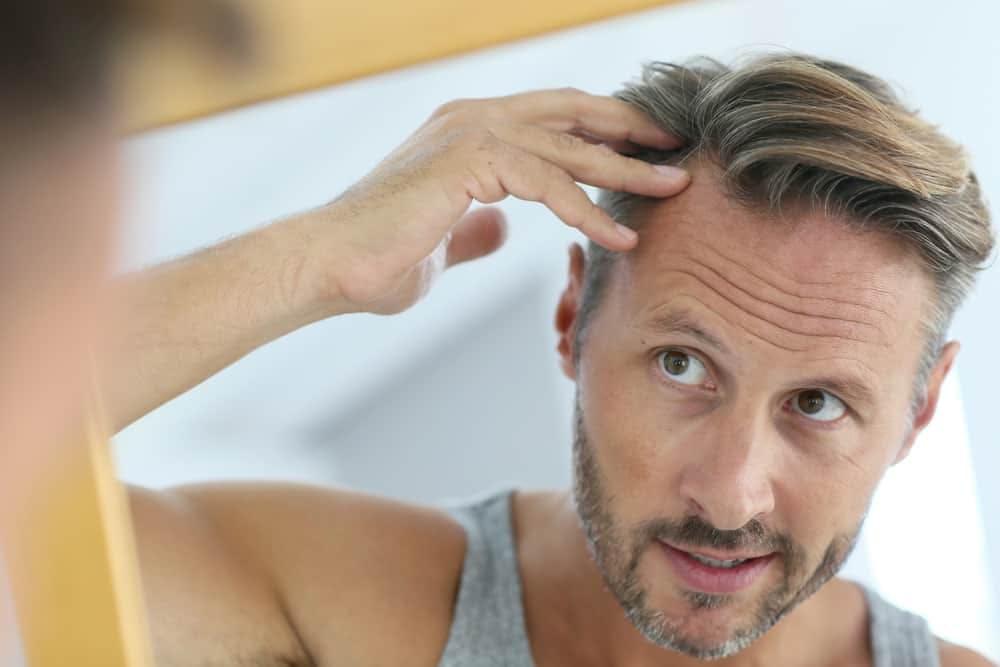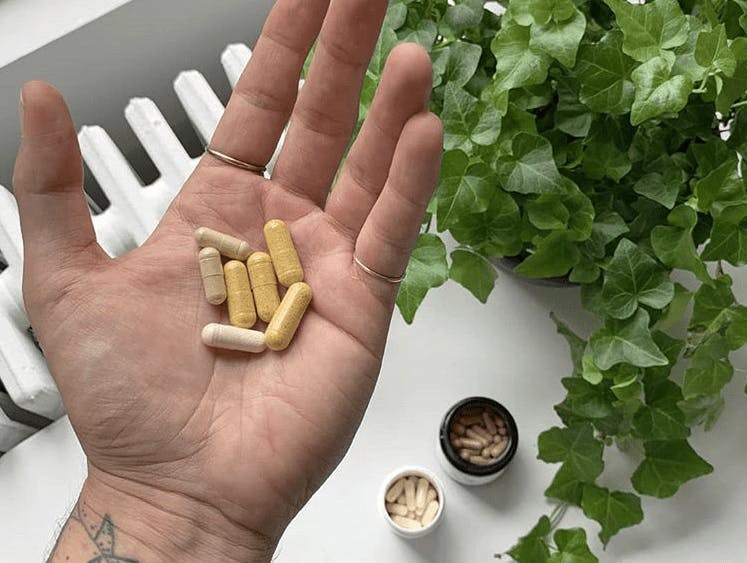If you’re familiar with Nutrafol, you may have noticed how amped we are about the science supporting the DHT-blocking potential of herbs like saw palmetto. But what is DHT hormone, and why should someone on the search for luscious hair and a flawless hairline care?
How A Natural DHT Blocker Can Help Your Hairline
8 Min Read

Get hair, health, and science news delivered right to your inbox.

Medically Reviewed by
DR. MELISSA ANZELONE, N NDIf you suffer from male or female pattern baldness and are are scrambling to understand how and why this condition occurs, DHT is the guy to know. Think of DHT as testosterone’s center of attention, obnoxious cousin: An essential part of the family, but too much of him can lead to issues.
What is DHT?
This androgenic hormone, fully christened dihydrotestosterone, is the byproduct of testosterone produced by an enzyme called 5-alpha-reductase. This enzyme is not-so-coincidentally found in the dermal papilla of your hair follicles — an important area teeming with dermal papilla cells that exert huge influence on your hair growth cycle.
No matter your biological gender, all bodies make testosterone. Because of this, you also have the capabilities of making DHT.
What does DHT do to your hair?

The gist of how we understand androgenic, or androgenetic, alopecia (an autoimmune skin disease causing hair loss) is that high levels of these DHT hormones bind to androgen receptors in your hair follicles. Not so scary sounding initially, right? This becomes a problem when strong influences of DHT cause your hair follicles and hair shafts to miniaturize and thin, leading to the progressive hair thinning that we so commonly correlate with male and female pattern baldness.
DHT’s mechanism is particularly important if you have a family history of androgenic alopecia. For genetically-inherited reasons research hasn’t fully sussed out yet, it seems that some of us are more prone than others to increased levels of DHT. This may be because your body has ramped up production of DHT. 5-alpha-reductase enzymes could be turning more testosterone into DHT than they should be. It could also be that you came into the hair game with higher amounts of those androgen receptors scattered around your hair follicles than others.
Research has shown that an “androgenetic alopecia predisposed dermis” (a hair follicle home base that is more sensitive to the development of this hair loss pattern) is one where DHT levels are higher and increased expression of androgen receptors are noted. Whatever your personal triggers may be, this domino effect leads to an increased impact of DHT’s presence and is estimated to affect up to 80% of men and 50% of women in their lifetime.
When does DHT start affecting hair growth?
For men, DHT-affected hair loss commonly becomes more apparent later in life, although in some individuals androgenic alopecia can begin as early as their teenage years.
In women, this pattern can occur early in life in cases of hyperandrogenism, or when abnormally-high levels of androgens are produced in the body. This becomes an important mechanism to consider in all women as they transition through perimenopause and menopause. As their levels of estrogen shift and decrease, their previously-counterbalanced androgens like DHT can sometimes take advantage of this change, especially in the deepening absence of the protective effects of estrogen on the skin.
What is the best DHT blocker?

Now that you know what DHT is, how it works, and the role it plays in hair thinning, the next logical question is: What can you do about it?
A number of hair loss products have been devised to help target this DHT mechanism and calm its hair follicle shrinking rampage. We’ve honed in on the research showing the impact herbs like saw palmetto can have on the DHT-creating enzyme 5-alpha-reductase with our Nutrafol Men’s supplement and natural DHT Inhibitor.
Various trials have shown this herbal plant to exhibit natural DHT-blocking effects, demonstrating safe reductions in DHT levels after exposure to saw palmetto in high-concentrated tissue and in individuals suffering from androgenic alopecia. As an added bonus, because saw palmetto, a key ingredient in Nutrafol, doesn’t appear to interfere with testosterone production or negatively impact testosterone levels, no serious� side effects (besides the occasional stomach ache if taken without food) have been reported with its use. Research has shed light on other natural DHT-blocking 5-alpha-reductase inhibitors, such as Reishi mushroom and epigallocatechins found in green tea.
While DHT can have a hair follicle-shrinking affect when allowed too much influence on your hair growth cycle, natural DHT blockers show promise as gentle, effective tools in decreasing DHT’s influence and supporting hair growth in those experiencing both male and female pattern baldness.
By Dr. Kali Olsen, ND